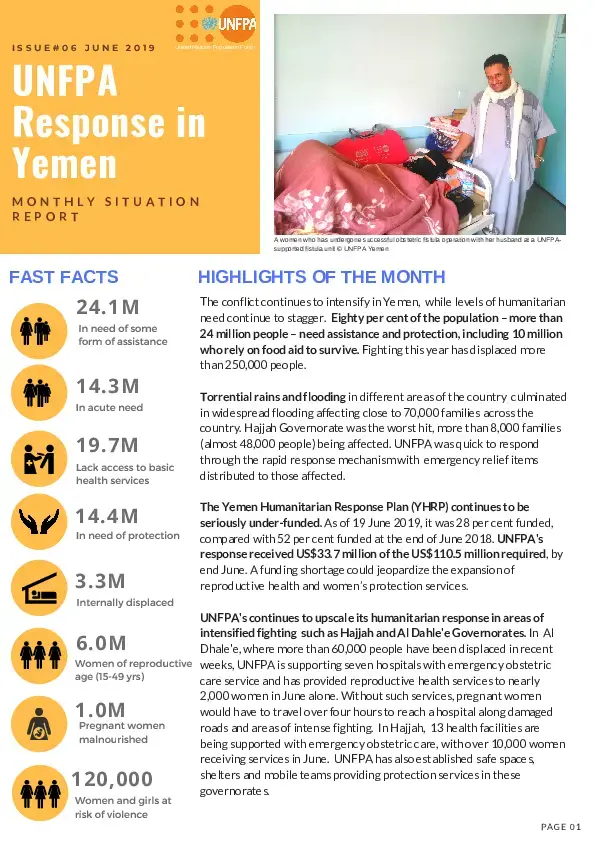The conflict continues to intensify in Yemen, while levels of humanitarian need continue to stagger. Eighty per cent of the population – more than 24 million people – need assistance and protection, including 10 million who rely on food aid to survive. Fighting this year has displaced more than 250,000 people.
Torrential rains and flooding in different areas of the country culminated in widespread flooding affecting close to 70,000 families across the country. Hajjah Governorate was the worst hit, more than 8,000 families (almost 48,000 people) being affected. UNFPA was quick to respond through the rapid response mechanism with emergency relief items distributed to those affected.
The Yemen Humanitarian Response Plan (YHRP) continues to be seriously under-funded. As of 19 June 2019, it was 28 per cent funded, compared with 52 per cent funded at the end of June 2018. UNFPA's
response received US$33.7 million of the US$110.5 million required, by end June. A funding shortage could jeopardize the expansion of reproductive health and women’s protection services.
UNFPA's continues to upscale its humanitarian response in areas of intensified fighting such as Hajjah and Al Dahle'e Governorates. In Al Dhale'e, where more than 60,000 people have been displaced in recent weeks, UNFPA is supporting seven hospitals with emergency obstetric care service and has provided reproductive health services to nearly 2,000 women in June alone. Without such services, pregnant women would have to travel over four hours to reach a hospital along damaged roads and areas of intense fighting. In Hajjah, 13 health facilities are being supported with emergency obstetric care, with over 10,000 women receiving services in June. UNFPA has also established safe spaces, shelters and mobile teams providing protection services in these governorates.


